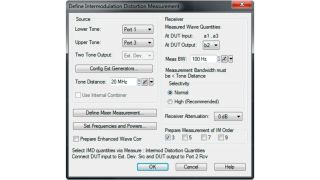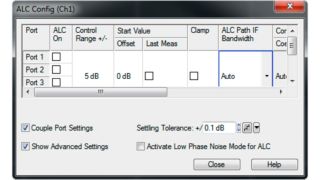Your task
At very high power levels, passive intermodulation (PIM) may occur in devices such as cables, connectors and (duplex) filters. For example, in modern wireless communications systems, PIM is a major concern in base station transceivers, where the frequency of PIM signals can coincide with the receiver path frequency of the duplex filter, degrading the sensitivity of the receiver. PIM testing of duplex filters during production is therefore essential. PIM measurements require two tones to be applied to the device under test (DUT), ideally swept in frequency and power. Conventional multi-instrument test setups based on signal generators and spectrum analyzers provide limited functionality and require programming effort to control and align the instruments. Solutions based on a single-source network analyzer also require an external signal generator and offer very limited measurement configurations.
Another challenge is the need to provide stable signals at high power levels. The thermal settling effects of the power amplifiers cause output power variations, which must be overcome in order to ensure that calibrated and stable power is applied to the DUT. To avoid damage to the test equipment and the DUT, the amplifiers must be switched off and on again when (dis)connecting the DUT. However, after switching on the amplifiers, a certain amount of time must elapse to regain a settled operating state. Knowing that it is hard to predict how much time is needed to achieve stable operation, and taking into account that speed is crucial in a production environment, it is not desirable to wait until the power amplifiers have reached steady state condition.












